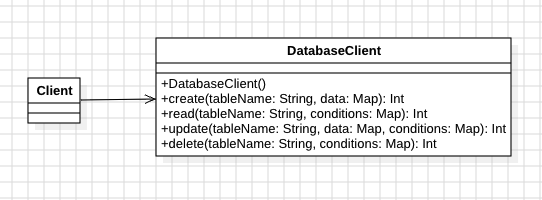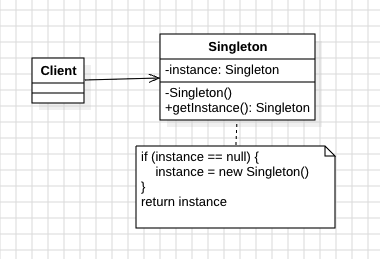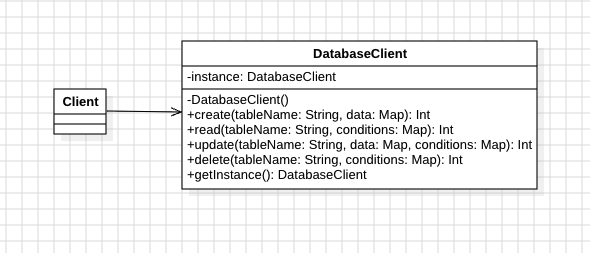Design Pattern 10: Singleton Pattern - Ensuring Single Instance Access for Database Connections and Global State Management
Download the complete Design Pattern series code from the design_pattern repo.
Introduction: The Power of Single Instance Control
The Singleton Pattern is a creational design pattern that ensures a class has only one instance and provides a global point of access to that instance. This pattern is essential for managing shared resources, global state, and ensuring consistent behavior across an application.
Real-World Applications
The Singleton Pattern is widely used in:
- Database Connections: Managing connection pools and ensuring single connection instance
- Logging Systems: Centralized logging with consistent configuration
- Configuration Management: Global application settings and preferences
- Cache Management: Shared cache instances across the application
- Service Locators: Centralized service management and dependency injection
Problem Statement: Database Connection Management
We need to develop an application that frequently interacts with a database. To ensure efficient database connections and proper resource management, we need to design a system that manages database connections effectively.
Object-Oriented Analysis (OOA)
Let’s analyze the requirements and design our initial solution:

We have CRUD operations and a constructor to create DatabaseClient instances.
Identifying Design Forces
Without the Singleton Pattern, we encounter several challenges:
- Resource Management: Multiple database connections consume excessive resources, leading to performance degradation
- Consistency: Need to ensure all database operations use the same connection to avoid data inconsistency
- Efficiency: Frequent creation and destruction of database connections reduces system efficiency
- Connection Limits: Database servers often have connection limits that can be exceeded
Applying Singleton Pattern Solution
The Singleton Pattern provides an elegant solution by ensuring only one instance exists throughout the application lifecycle.
Singleton Pattern UML Structure

The Singleton pattern uses a getInstance() method to retrieve the instance, checking if the internal instance property is null. If null, it creates a new instance; otherwise, it returns the existing instance, ensuring only one instance exists.
Applied to Database Client

Implementation: Object-Oriented Programming (OOP)
Basic Singleton Implementation
class DatabaseClient {
fun create(tableName: String, data: Map<String, Any>): Int {
println("Creating record in $tableName")
return 1
}
fun read(tableName: String, conditions: Map<String, Any>): Int {
println("Reading from $tableName")
return 1
}
fun update(tableName: String, data: Map<String, Any>, conditions: Map<String, Any>): Int {
println("Updating $tableName")
return 1
}
fun delete(tableName: String, conditions: Map<String, Any>): Int {
println("Deleting from $tableName")
return 1
}
companion object {
@Volatile
private var instance: DatabaseClient? = null
fun getInstance(): DatabaseClient {
return instance ?: synchronized(this) {
instance ?: DatabaseClient().also { instance = it }
}
}
}
}
Client Usage
fun main() {
val db1 = DatabaseClient.getInstance()
val db2 = DatabaseClient.getInstance()
println("Are instances the same? ${db1 === db2}") // true
db1.create("users", mapOf("name" to "John", "email" to "john@example.com"))
db2.read("users", mapOf("name" to "John"))
}
Kotlin Object Declaration (Simplified Singleton)
Kotlin provides a built-in object declaration that automatically implements the Singleton pattern:
object DatabaseClient {
fun create(tableName: String, data: Map<String, Any>): Int {
println("Creating record in $tableName")
return 1
}
fun read(tableName: String, conditions: Map<String, Any>): Int {
println("Reading from $tableName")
return 1
}
fun update(tableName: String, data: Map<String, Any>, conditions: Map<String, Any>): Int {
println("Updating $tableName")
return 1
}
fun delete(tableName: String, conditions: Map<String, Any>): Int {
println("Deleting from $tableName")
return 1
}
}
Client Usage with Object Declaration
fun main() {
val db = DatabaseClient // Direct access, no getInstance() needed
db.create("users", mapOf("name" to "John", "email" to "john@example.com"))
}
Advanced Implementation: Thread-Safe Singleton
Double-Checked Locking Pattern
class ThreadSafeDatabaseClient private constructor() {
fun create(tableName: String, data: Map<String, Any>): Int {
println("Creating record in $tableName")
return 1
}
fun read(tableName: String, conditions: Map<String, Any>): Int {
println("Reading from $tableName")
return 1
}
fun update(tableName: String, data: Map<String, Any>, conditions: Map<String, Any>): Int {
println("Updating $tableName")
return 1
}
fun delete(tableName: String, conditions: Map<String, Any>): Int {
println("Deleting from $tableName")
return 1
}
companion object {
@Volatile
private var instance: ThreadSafeDatabaseClient? = null
fun getInstance(): ThreadSafeDatabaseClient {
return instance ?: synchronized(this) {
instance ?: ThreadSafeDatabaseClient().also { instance = it }
}
}
}
}
Lazy Initialization with Delegate
class LazyDatabaseClient private constructor() {
fun create(tableName: String, data: Map<String, Any>): Int {
println("Creating record in $tableName")
return 1
}
fun read(tableName: String, conditions: Map<String, Any>): Int {
println("Reading from $tableName")
return 1
}
fun update(tableName: String, data: Map<String, Any>, conditions: Map<String, Any>): Int {
println("Updating $tableName")
return 1
}
fun delete(tableName: String, conditions: Map<String, Any>): Int {
println("Deleting from $tableName")
return 1
}
companion object {
val instance: LazyDatabaseClient by lazy { LazyDatabaseClient() }
}
}
Real-World Example: Configuration Manager
object ConfigurationManager {
private val properties = mutableMapOf<String, String>()
init {
// Load configuration from file or environment
properties["database.url"] = System.getenv("DB_URL") ?: "localhost:5432"
properties["database.username"] = System.getenv("DB_USERNAME") ?: "default"
properties["database.password"] = System.getenv("DB_PASSWORD") ?: "password"
properties["app.environment"] = System.getenv("APP_ENV") ?: "development"
}
fun getProperty(key: String): String? {
return properties[key]
}
fun setProperty(key: String, value: String) {
properties[key] = value
}
fun getAllProperties(): Map<String, String> {
return properties.toMap()
}
}
// Usage
fun main() {
val dbUrl = ConfigurationManager.getProperty("database.url")
println("Database URL: $dbUrl")
ConfigurationManager.setProperty("app.debug", "true")
println("Debug mode: ${ConfigurationManager.getProperty("app.debug")}")
}
Best Practices and Considerations
1. Thread Safety
// Good: Thread-safe singleton
object ThreadSafeSingleton {
private val lock = Any()
@Volatile
private var instance: ThreadSafeSingleton? = null
fun getInstance(): ThreadSafeSingleton {
return instance ?: synchronized(lock) {
instance ?: ThreadSafeSingleton().also { instance = it }
}
}
}
// Avoid: Non-thread-safe singleton
class BadSingleton {
companion object {
private var instance: BadSingleton? = null
fun getInstance(): BadSingleton {
if (instance == null) {
instance = BadSingleton() // Race condition!
}
return instance!!
}
}
}
2. Lazy Initialization
// Good: Lazy initialization
object LazySingleton {
val instance by lazy {
// Expensive initialization
ExpensiveObject()
}
}
// Avoid: Eager initialization
object EagerSingleton {
val instance = ExpensiveObject() // Created immediately
}
3. Testing Considerations
// Good: Testable singleton
class TestableDatabaseClient private constructor() {
companion object {
@Volatile
private var instance: TestableDatabaseClient? = null
fun getInstance(): TestableDatabaseClient {
return instance ?: synchronized(this) {
instance ?: TestableDatabaseClient().also { instance = it }
}
}
// For testing
fun resetInstance() {
instance = null
}
}
}
Performance Comparison
| Implementation | Thread Safety | Performance | Memory Usage | Complexity |
|---|---|---|---|---|
| Eager Singleton | Yes | High | High | Low |
| Lazy Singleton | Yes | Medium | Low | Medium |
| Double-Checked Locking | Yes | High | Low | High |
| Kotlin Object | Yes | High | Low | Low |
Common Anti-Patterns to Avoid
1. Global State Abuse
// Avoid: Using singleton for everything
object GlobalState {
var userData: MutableMap<String, Any> = mutableMapOf()
var appSettings: MutableMap<String, Any> = mutableMapOf()
var cache: MutableMap<String, Any> = mutableMapOf()
}
2. Tight Coupling
// Avoid: Direct singleton dependency
class UserService {
fun createUser(user: User) {
DatabaseClient.getInstance().create("users", user.toMap())
}
}
// Better: Dependency injection
class UserService(private val databaseClient: DatabaseClient) {
fun createUser(user: User) {
databaseClient.create("users", user.toMap())
}
}
Related Design Patterns
- Factory Method: Creates objects without specifying exact classes
- Abstract Factory: Creates families of related objects
- Builder: Constructs complex objects step by step
- Prototype: Creates new objects by cloning existing ones
Conclusion
The Singleton Pattern provides a powerful way to ensure only one instance of a class exists while providing global access. Key benefits include:
- Resource Management: Efficient use of system resources
- Consistency: Ensures consistent state across the application
- Global Access: Provides easy access to shared resources
- Performance: Avoids repeated object creation overhead
This pattern is essential for managing shared resources like database connections, logging systems, and configuration management.
Related Articles
Enjoy Reading This Article?
Here are some more articles you might like to read next: